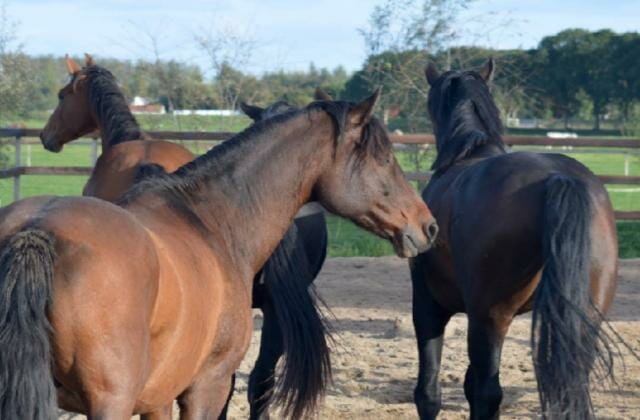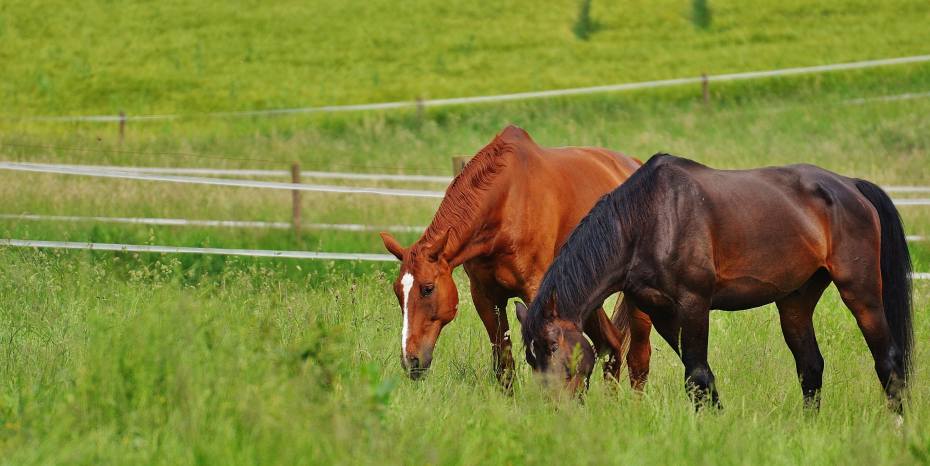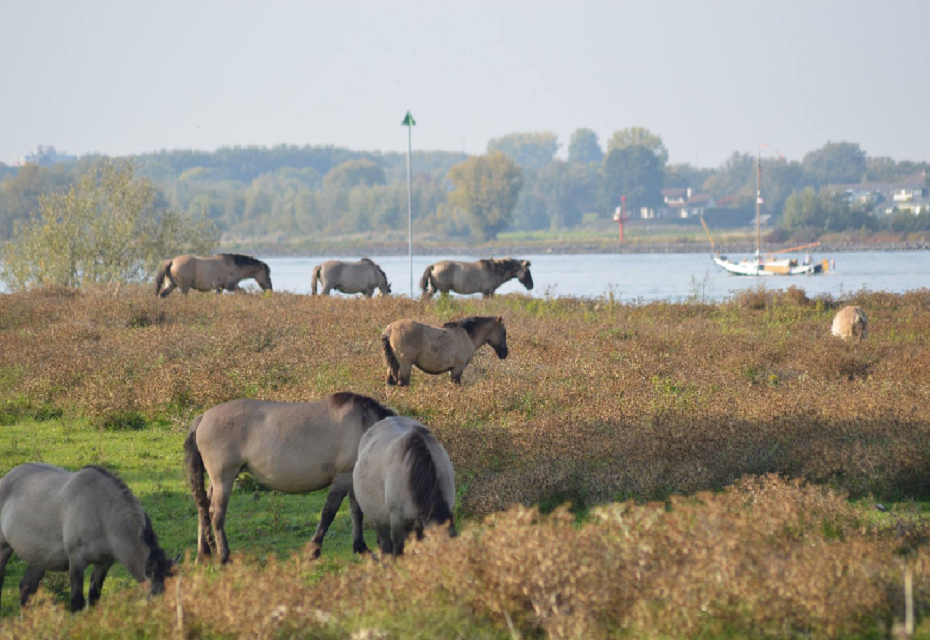INTRODUCING HORSES – NOT SO STRAIGHTFORWARD
Introducing horses can be an extremely stressful process for everyone involved. Whether you are introducing a new horse to their potential field mate, switching horses between herds, or introducing a new member to a long established herd, there is always a risk they won’t get on and possibly injure each other.
Horses are innately amiable, social animals. In a natural situation they spend their lives in a close-knit group showing little or no aggression towards each other. Aggressive behavior tends to only occur in very extreme situations, for example, when the herd is threatened, or if resources are low and they feel they need to fight to survive. Horses have to rely on their herd mates to warn them of danger and as a result, they form very close bonds with other herd members and look out for one other. These very strong herd bonds, however, mean that a stable, established herd may not be quick to accept a new member, and outsiders may not be welcomed.

THE COMPLICATION OF CONFINED SPACES
Horses would naturally have a large ‘home range’ covering many square miles that they would explore every day, however our domestic horses are confined to much smaller areas. Freedom of movement is essential for a horse’s physical and mental well-being, and confinement in small spaces is a naturally difficult – even frightening – situation for them. Limited space and resources can cause aggressive behavior among herd members who feel they need to defend what little they have. This can cause a high level of anxiety within the group, especially if these horses are already under-socialised and fearful of others. Introducing a newcomer to a herd living in restricted space with limited resources can therefore be an invitation to injury, as there will already be tension within the group and often no room to escape potential aggressors.
HOW TO ENSURE A SMOOTH INTRODUCTION PROCESS
Horses are often sold and move home frequently. They are taken from their friends without warning and often deprived of any opportunity to establish long-term bonds or the ability to lead a normal social life. We expect them to adjust to their new surroundings and get along with new horses, people, management and routines immediately. Little thought seems to be given to how it must feel for a horse to be uprooted from his home and security and suddenly to be taken somewhere completely alien.

If you’re interested in exploring this topic further, you might like to take a look at a micro course we have developed which is free for Equitopia members. The course deals with moving horses to another location or group. It has been developed by Equine Behaviorist, Justine Harrison. Justine is a fully certified member of the International Association of Animal Behavior Consultants (IAABC). She is also the organisation’s UK Chair, a member of the Application Review Committee, and a Mentor for both the IAABC’s Online Mentorship programme and the Animal Behavior Consulting Principles & Practice course. Justine is also registered as an Accredited Animal Behaviorist with the Animal Behavior and Training Council, and she lectures on the BSc (Hons) Behavioral Science Degree at Writtle University College. Justine also acts as an expert consultant in legal disputes and court cases involving equine behavior.






